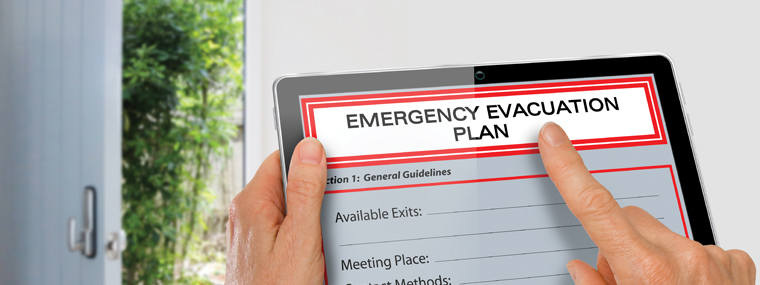
How to Craft and Facilitate a Hurricane Preparedness Checklist
By Gary van der Laan, CFCAM, CMCA, AMS, PCAM / Published July 2016

What do all community associations in Florida have in common regardless of size, type, or amenities? The answer is simple: they all share the responsibility of crafting and facilitating a disaster preparedness plan for their community. Florida has had more storms and hurricanes on record than any other U.S. state, totaling 488 to date. Since 1851 when storm tracking began, there have only been 18 hurricane seasons in Florida that have passed without a known storm impacting the state. Although Florida has not suffered the devastating effects of a hurricane in the past ten years, the threat is present every hurricane season from early June to late November. Associations not only have a responsibility to protect the association’s assets; they have a vested personal interest in the financial health of the comm-unity. According to the Insurance Information Institute, the nationwide cost of losses resulting from hurricanes in 2008 totaled $10.5 billion. By adopting a disaster preparedness plan, the board of directors can take a big step in safeguarding the association’s property, finances, residents, and lifestyle.
Before the Storm:
• Contact your management company to see what their involvement will be in creating and facilitating a disaster preparedness plan.
• Develop a disaster preparedness plan. This plan should assess risk, summarize disaster expense costs in a financial plan, and plan for the recovery stage. Share the plan with the members of your association and take steps to educate the homeowners on how they can protect their individual properties. The plan should outline who is responsible for which functions and who the residents should contact if they need assistance with something that the association is not responsible for. Consider asking for volunteers to form a committee to take on these tasks.
• Post the nearest shelter and evacuation routes in case they become necessary.
• Contact all of your vendors and find out what their involvement would be in a post-storm situation.
• Contact your management company or insurance company to ensure all policies are up-to-date and have adequate coverage.
• Document the state of your assets and take photos.
• Ensure all community documents are updated. It can be helpful to store a copy in an off-site location and always keep a digital copy.
• Ensure all amenities are as protected as possible. Contact vendors for suggestions on how to handle specific items like pools and irrigation systems.
• Contact your landscape company to trim back any trees that could present a danger in the storm.
• Secure any loose items like pool furniture or common area items that could present a danger in the storm.
• If your association is in an area prone to flooding, consider sandbagging areas of the community that may be affected.
• Do not wait until the storm is imminent to buy supplies like plywood and gas. These items will be in high demand, and you don’t want to be shorthanded.
During the storm:
• Alert any on-site employees that your disaster preparation plan is in place.
• Get a battery-powered or crank radio to keep up with the status of the storm if electricity is cut off.
• Hunker down and stay safe. Follow the advice of weather authorities.
• Contact the members of your disaster preparedness plan who have assigned tasks or responsibilities as soon as possible after the storm.
After the storm:
• Check all common areas as soon as possible to document any damage. Photos should be taken before any cleanup and sent to the insurance company to file a claim. It is important to do this quickly as there will be a long list of people filing claims.
• Call vendors to remove debris and make necessary repairs.
• Report any fallen or downed power lines as soon as possible. Mark the area with cones or signage to warn residents of any danger.
• Call the city or county to determine what they will help with and their timeline.
• Post helpful contact information on bulletin boards or the community website to keep residents informed of your progress.
• Mitigate any further damage to community buildings by boarding broken windows or doors and adding tarps to any leaky roofs. Also remove any wet carpet or drywall to avoid mold.
• Post emergency aid resources for association members who may have sustained severe damage to their homes and may need assistance with food and shelter.
Being prepared, immediately mitigating any further damage, and optimizing insurance recovery are the tenets of any good emergency preparedness plan. The board of directors, along with their management company, are stewards of this plan and should take measures to protect the association’s assets as best they can.
Gary van der Laan, CFCAM, CMCA, AMS, PCAM
Vice President of Leland Management
Gary van der Laan, CFCAM, CMCA, AMS, PCAM, has been a licensed community association manager for more than 20 years. As vice president at Leland Management, he facilitates Leland’s continuing education program for community managers as well as teaches Board Certification Courses throughout the state. He is an active member of CAI, serving two years as president of the Central Florida chapter. He holds several industry designations and has been appointed to the Florida Bar’s UPL (unlicensed practice of law) committee. He is a contributor to FCAP’s education curriculum. Van der Laan joined the Leland Team in 2007.


